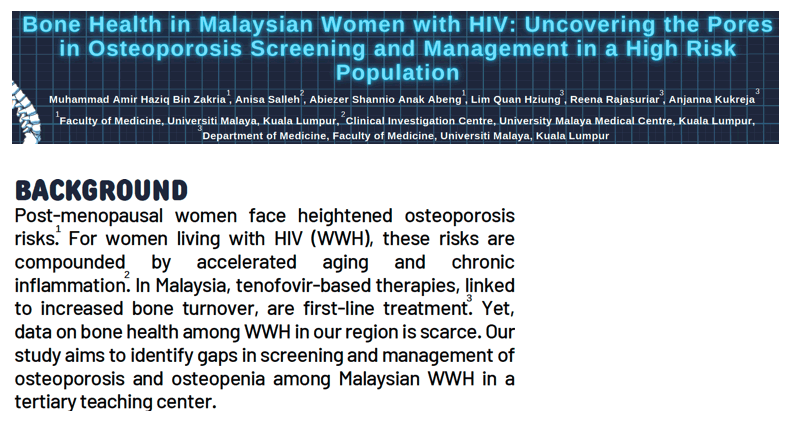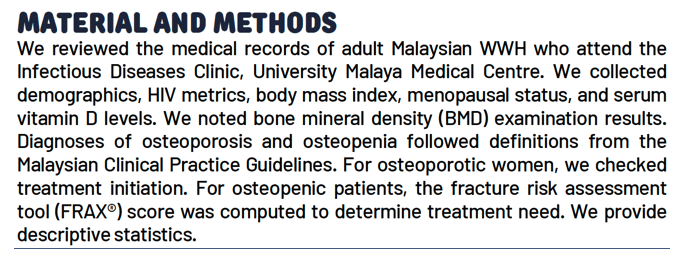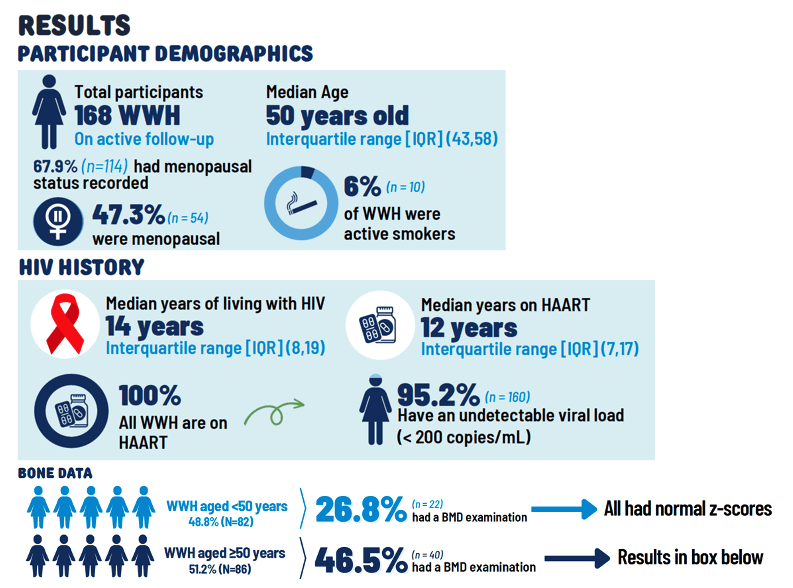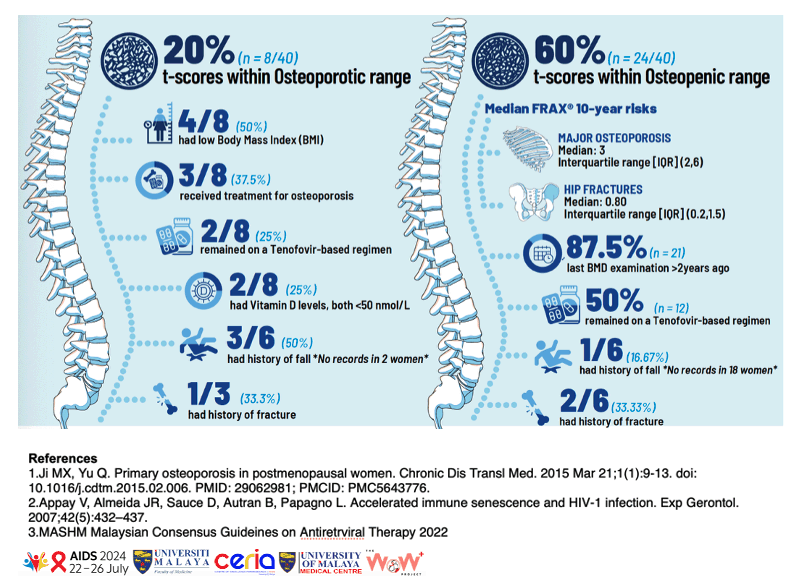 |
 |
 |
| |
Bone health in Malaysian women living with HIV: uncovering the pores in osteoporosis screening and management in a high-risk population
|
| |
| |
Reena Rajasuriar

A. Kukreja1, M.A.H. Zakria2, A. Salleh3, A.S. Anak Abeng2, Q.H. Lim1, R. Rajasuriar1
Institutions
1Universiti Malaya, Medicine, Kuala Lumpur, Malaysia, 2Universiti Malaya, Faculty of Medicine, Kuala Lumpur, Malaysia, 3Universiti Malaya, Centre of Excellence for Research in AIDS (CERIA), Kuala Lumpur, Malaysia
BACKGROUND: Post-menopausal women face heightened osteoporosis risks. For women living with HIV (WLWH), these risks are compounded by accelerated aging and chronic inflammation. In Malaysia, tenofovir-based therapies, linked to increased bone turnover, are first-line treatment. Yet, data on bone health among WLWH in our region is scarce. Our study aims to identify gaps in screening and management of osteoporosis and osteopenia among Malaysian WLWH in a tertiary teaching center.
METHODS: We reviewed the records of adult Malaysian WLWH who attend the Infectious Diseases Clinic, University Malaya Medical Centre. We collected demographics, HIV metrics, body mass index, menopausal status, and serum vitamin D levels. We noted bone mineral density (BMD) examination results. Diagnoses of osteoporosis and osteopenia followed definitions from the Malaysian Clinical Practice Guidelines. For osteoporotic women, we checked treatment initiation. For osteopenic women, the fracture risk assessment tool (FRAX®) score was computed to determine treatment need. We provide descriptive statistics.
RESULTS: We collected data from 168 WLWH. The median age was 50 years (Interquartile Range IQR: 43,58), with 82(48.8%) aged <50 years and 86(51.2%) =50 years. The median duration of living with HIV was 12 years (IQR 7,17). All participants received antiretroviral therapy, and 160(95.2%) had an undetectable viral load. Menopause status was recorded in 67.9%(n=114), of which 47.3%(n=54) were menopausal. Only 10(6%) were active smokers. Of those aged <50 years (n=82), 26.8%(n=22) had a BMD examination, all of whom had normal z-scores. Among women aged =50 years (n=86), only 40(46.5%) had a BMD examination, with 8(20%) and 24(60%) having osteoporotic and osteopenic t-scores respectively. Amongst the 8 osteoporotic women, half had low BMI, three (37.5%) received treatment and two (25%) were on a tenofovir-based regimen. Only 2(25%) had Vitamin D levels, with both readings <35 nmol/L. The osteopenic women (n=24) had median FRAX® 10-year risks of 3%(IQR 2,6) for major fractures and 0.8%(IQR 0.2,1.5) for hip fractures. However, most women (n=21,87.5%) had their last BMD examination >2 years ago, and half (n=12, 50%) continue on tenofovir-based regimens.
CONCLUSIONS: Older Malaysian WLWH face under-screening and inadequate management of bone health. HIV physicians should extend care beyond viral suppression, emphasizing comprehensive bone health.




|
| |
|
 |
 |
|
|